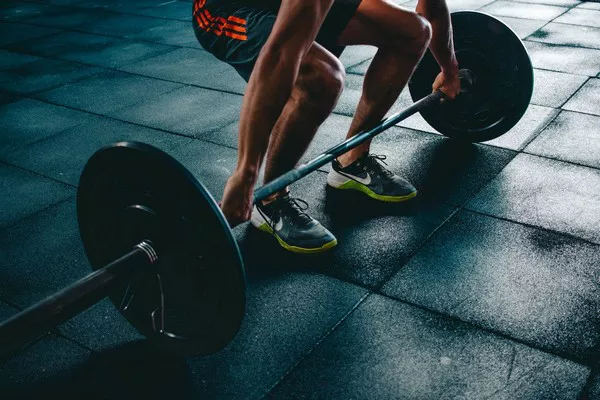The realm of running is a captivating blend of endurance, grace, and the rhythmic cadence of strides. Yet, the pursuit of excellence for runners transcends the miles logged; it delves into the realm of strength training. These two seemingly disparate worlds are, in fact, interconnected facets that can intricately enhance a runner’s performance and holistic well-being. This article ventures into the nuanced tapestry woven between strength training and running, shedding light on its profound advantages, strategic methodologies, potential pitfalls, and the delicate art of balancing both disciplines.
SEE ALSO: Cardio vs. Strength Training: Which Is for Optimal Fitness
The Benefits of Strength Training for Runners
Beneath the surface of running’s cardiovascular facade lies a tapestry of muscles, joints, and biomechanical intricacies that orchestrate every stride. Strength training introduces a dynamic dimension to this tapestry, fortifying pivotal muscle groups, enhancing joint stability, and warding off common injuries.
1. The Power of Muscle Endurance
At the crux of strength training’s impact on runners lies the cultivation of muscle endurance, a cornerstone of conquering long distances. By engaging in targeted exercises focusing on the legs, core, and upper body, runners equip themselves with the stamina to uphold proper running form even amidst the throes of fatigue. This translates to enhanced posture, optimized biomechanics, and sustained efficiency throughout the course of runs.
2. Injury Prevention and Joint Stability
The repetitive impact of running can subject joints and muscles to wear and tear. Strength training operates as a fortress of defense against such injury susceptibility by bolstering joint stability and rectifying muscular imbalances. The robust framework thus developed acts as a bulwark against common running injuries, including the likes of shin splints, IT band syndrome, and the notorious runner’s knee.
3. Speed and Explosive Power
Strength training’s contributions transcend endurance; they infuse an element of speed and explosive power into a runner’s arsenal. The inclusion of plyometric exercises, for instance, amplifies the activation of fast-twitch muscle fibers. This translates into augmented acceleration, the ability to surge with vitality during sprints, and an invaluable asset in both races and training regimes.
4. Core Strength and Posture
A runner’s prowess hinges on a robust core, a foundation of efficient running mechanics. By directing strength training efforts toward core muscles, runners foster equilibrium, stability, and balance. This tangible core strength translates to improved posture during runs, curbing energy dissipation, staving off premature fatigue, and enabling runners to sustain their stride with grace.
Best Practices of Strength Training for Runners: Harmonizing Strength and Running
While the marriage of strength training and running stands as an undeniable alliance, achieving equilibrium necessitates mindful adherence to best practices and strategic methodologies.
1. Periodization: Infuse your training regimen with the principle of periodization, alternating between phases of dedicated strength training and running-focused periods. This cyclic approach prevents overexertion, safeguards against burnout, and optimizes performance in both realms.
2. Specificity: Tailor your strength training regimen to harmonize with your unique running objectives. Long-distance runners, for instance, may prioritize muscular endurance and joint stability, while sprinters may emphasize cultivating explosive power.
3. Recovery: Incorporate recovery days into your routine, offering your body the vital reprieve it requires for recuperation. Adequate recovery fosters muscular repair and adaptation, mitigating the risk of overuse injuries associated with both running and strength training.
4. Proper Form: The significance of maintaining proper form during exercises cannot be overstated. Whether engaging in weightlifting or bodyweight movements, adherence to correct technique ensures safety and maximizes the benefits of strength training. Engaging the guidance of a certified fitness professional or coach can be invaluable in this regard.
Strength Training Programs Designed for Runners
There are several specific strength training programs that have been designed with runners in mind. These programs aim to enhance a runner’s performance, prevent injuries, and improve overall strength and stability. Here are a few notable ones:
1. StrongLifts 5×5: While not specifically designed for runners, the StrongLifts 5×5 program focuses on fundamental compound lifts like squats, deadlifts, and bench presses. These exercises can help build overall strength and muscle mass, which can complement a runner’s training by providing a strong foundation. It’s essential to adapt the program to your running schedule to prevent overtraining.
2. Jay Johnson’s Strength and Mobility Routine: Jay Johnson, a renowned running coach, has developed a strength and mobility routine specifically for runners. This routine includes exercises that target common weaknesses and imbalances in runners, helping to prevent injuries and improve running efficiency.
3. Nike Training Club (NTC): The Nike Training Club app offers various strength training programs tailored for runners. These programs often combine bodyweight exercises, functional movements, and mobility work to support a runner’s performance.
4. Hal Higdon’s Strength Training for Runners: Hal Higdon, a respected running coach, has developed a strength training program for runners. This program focuses on exercises that strengthen the core, hips, and glutes – areas crucial for running mechanics and injury prevention.
5. MobilityWOD: While not a traditional strength training program, MobilityWOD (Workout of the Day) provides mobility exercises that can enhance flexibility, range of motion, and joint health. Improved mobility can translate to better running mechanics and reduced risk of injuries.
6. CrossFit Endurance: CrossFit Endurance adapts CrossFit principles to endurance training. It incorporates strength training, conditioning, and mobility work to improve running performance.
7. POSE Method Strength Training: The POSE Method is a running technique that emphasizes efficient running form. Some programs incorporate strength training exercises that specifically target the muscles and movements involved in the POSE method.
SEE ALSO: Best Strength Training for Runners: An Ultimate Guide
Potential Pitfalls of Strength Training for Runners
While the rewards of strength training for runners are manifold, there exist potential pitfalls that necessitate vigilance and a balanced approach.
1. Overtraining: Introducing intense strength training without allowing sufficient time for recovery can culminate in the pitfall of overtraining. Attuned self-monitoring is vital, enabling you to gauge your body’s responses and adjust your training regimen accordingly.
2. Imbalanced Focus: An excessive preoccupation with strength training might inadvertently detract from the progression of your running pursuits. Striking an equilibrium that bolsters your running aspirations without compromising overall muscular strength is an art to master.
3. Risk of Injury: Careless execution or excessive loading during strength training sessions can heighten the risk of injuries. The cardinal importance of proper technique, gradual progression, and attentiveness to individual capacity cannot be overstated.
4. Flexibility and Mobility: The zeal to build strength should not overshadow the significance of flexibility and mobility training. A supple muscular framework and limber joints contribute to superior running mechanics and overall fluidity of movement.
Conclusion: Integrating Strength and Miles
The marriage of strength training and running represents an evolution from ordinary running to that of a balanced athlete. By embracing the potential of strength training, runners transcend their limits, embracing long distances with tenacity, sprinting with dynamism, and embracing each stride with elegance. The journey toward becoming a balanced runner unfolds through meticulous planning, unwavering dedication, and a profound recognition of the art of amalgamating strength and strides. As the running shoes are laced and the road unfurls, remember that the path to triumph traverses the juncture of muscular might and rhythmic motion, a realm where strength and strides harmonize seamlessly.
[inline_related_posts title=”Related Topics” title_align=”left” style=”list” number=”3″ align=”none” ids=”1726,1723,1629″ by=”categories” orderby=”rand” order=”DESC” hide_thumb=”no” thumb_right=”no” views=”no” date=”yes” grid_columns=”1″ post_type=”” tax=””]


































